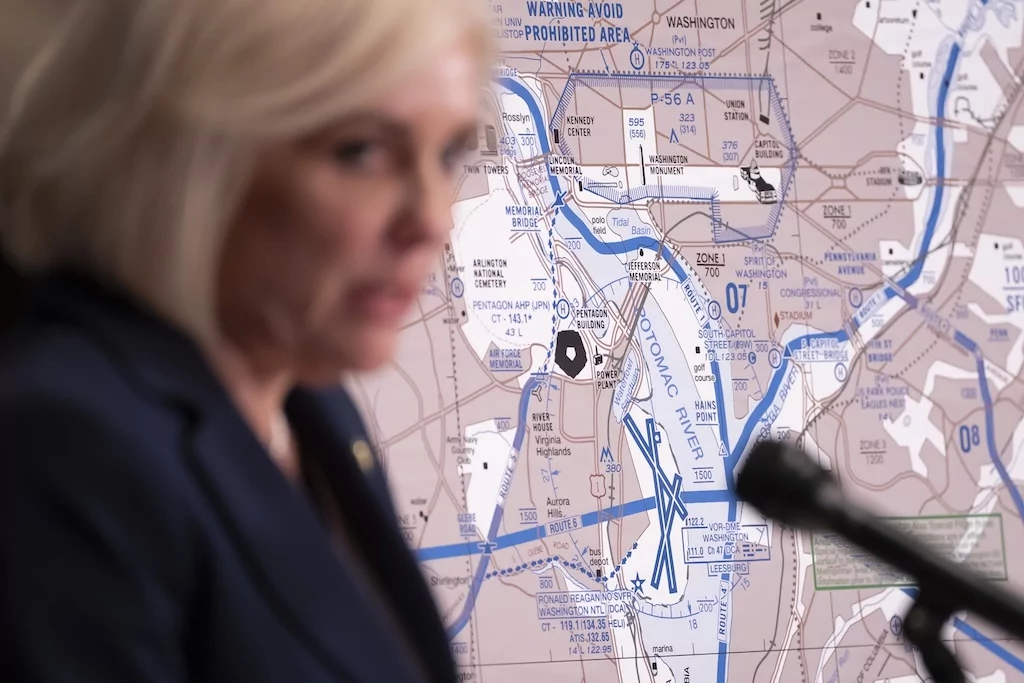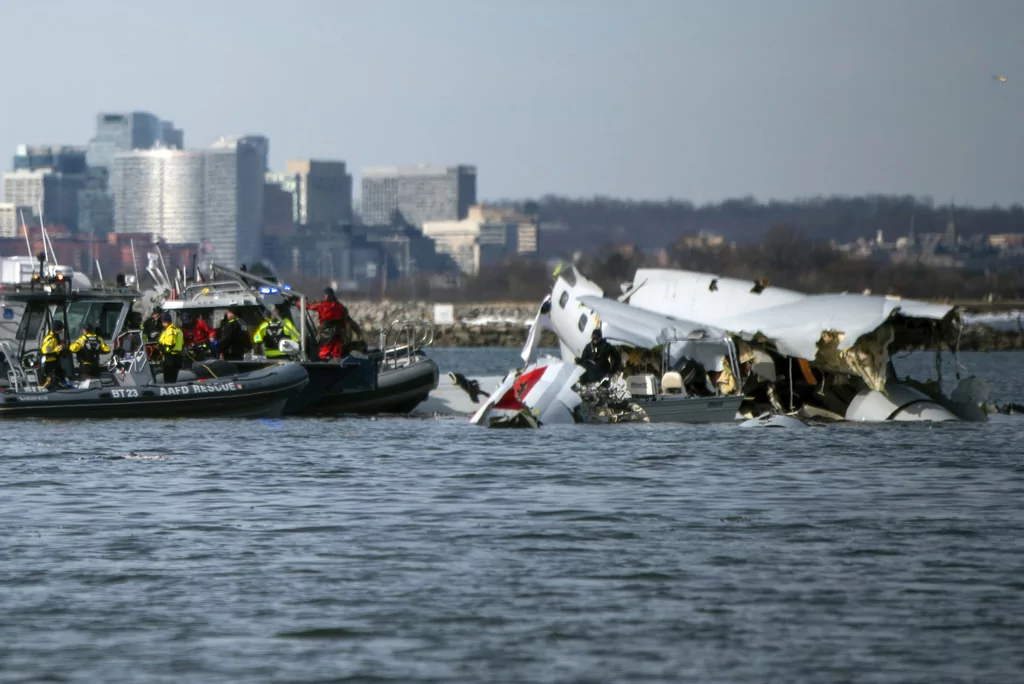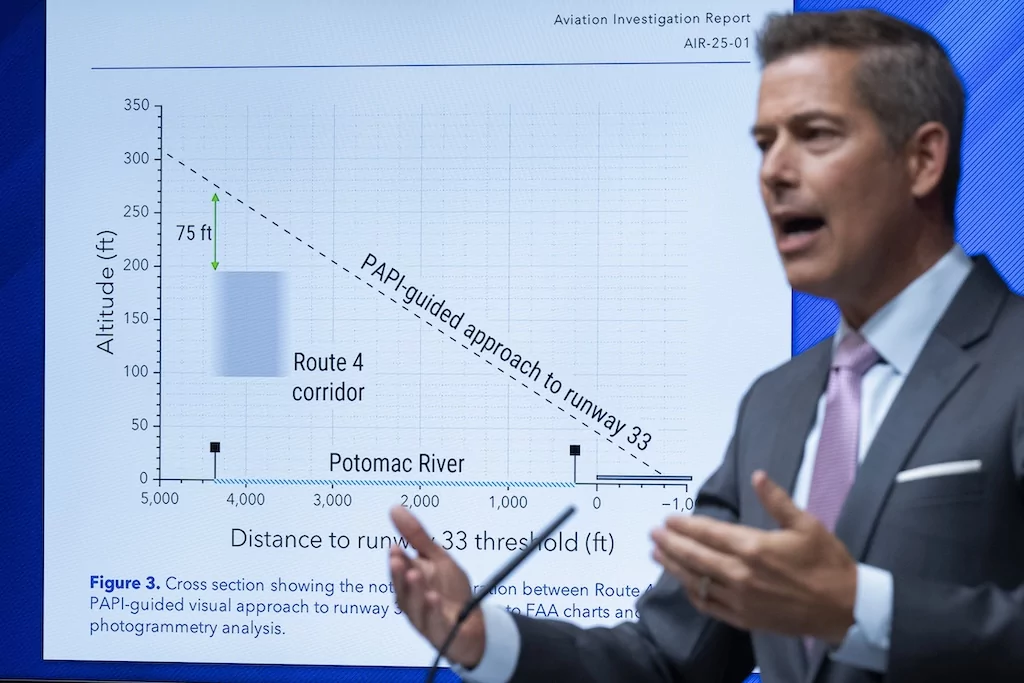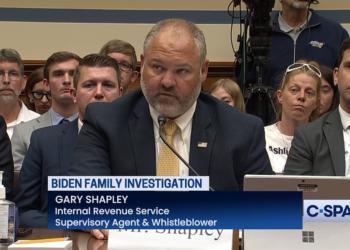National Transportation Safety Board investigators issued a pair of “urgent” safety recommendations for helicopter paths on Tuesday as part of their preliminary report into the deadly midair collision over the Potomac River in January.
The Jan. 29 crash between an American Airlines CRJ-700 and an Army helicopter near Ronald Reagan Washington National Airport killed all 67 people on board both aircraft and heightened concerns over the crowded airspace near Washington, D.C.
While the NTSB is still conducting its full investigation into the accident, NTSB Chairwoman Jennifer Homendy announced Tuesday it is asking for helicopter operations to be changed near the DCA airport when certain runways are being used.

“We’ve determined that the existing separation distances between helicopter traffic operating on [helicopter] Route 4 and aircraft landing on runway 33 are insufficient and pose an intolerable risk to aviation safety by increasing the chances of a midair collision at DCA,” Homendy said.
The NTSB issued two safety recommendations. It called on the Federal Aviation Administration to “prohibit operations on helicopter Route 4 between Hains Point and the Wilson Bridge when runways 15 and 33 are being used for departures and arrivals” and create an “alternative helicopter route” for when operations are suspended for Route 4 between those points.
In the NTSB’s preliminary report on the accident, which was issued Tuesday, investigators found that of the 944,179 operations at DCA between October 2021 and December 2024, there were 15,214 instances where a commercial airplane and helicopter had less than one nautical mile lateral separation and fewer than 400 feet vertical separation. During that same time period, there were 85 occurrences in which the airplane and helicopter had less than 1,500 feet of lateral separation and less than 200 feet of vertical separation.

Transportation Secretary Sean Duffy said at a separate press conference on Tuesday that the agency would implement the proposed restrictions to Route 4 and made exceptions only for presidential travel, a life-saving mission, or law enforcement activity. He noted that airspace gets shut down when those exceptions happen to ensure airplanes are not nearby and the helicopter is allowed to travel in the normally restricted space.
Duffy said the FAA is examining other airports using artificial intelligence tools to determine if there are similar “hot spots” for possible midair collisions and to develop solutions.
“What the FAA has deployed is AI tools to make sure we can sift through the data and find hot spots in our airspace at our airports. So if there’s another DCA-esque situation out there, our AI tools will help us identify those and take corrective actions preemptively, as opposed to retroactively,” Duffy said.
The transportation secretary also stressed the need to modernize the country’s air traffic control systems and expressed his anger that DCA experienced so many close calls in recent years without taking action to change procedures.

Duffy and Homendy stressed that, despite the incident, air travel is still by far the safest mode of transportation.
“I just flew with my daughter out of DCA on a CRJ with PSA airlines,” Homendy said in reference to the regional carrier that operated the American Airlines crash involved in the January incident. “Aviation is incredibly safe. DCA is where I always fly out of. I say often that your biggest risk is in your personal vehicle when you’re going to and from the aircraft at the airport.”
NTSB CONSIDERING POSSIBILITY OF ‘BAD DATA’ LEADING TO POTOMAC PLANE CRASH
“Aviation is safe. However, there are safety issues in areas where we need to improve to make sure that we are at zero. And so that is the role of the NTSB, and investigating this is why we issue urgent safety recommendations,” she added.
The January midair collision over the Potomac River was the first deadly commercial aviation crash in the United States since 2009 and the deadliest such incident domestically since November 2001.














